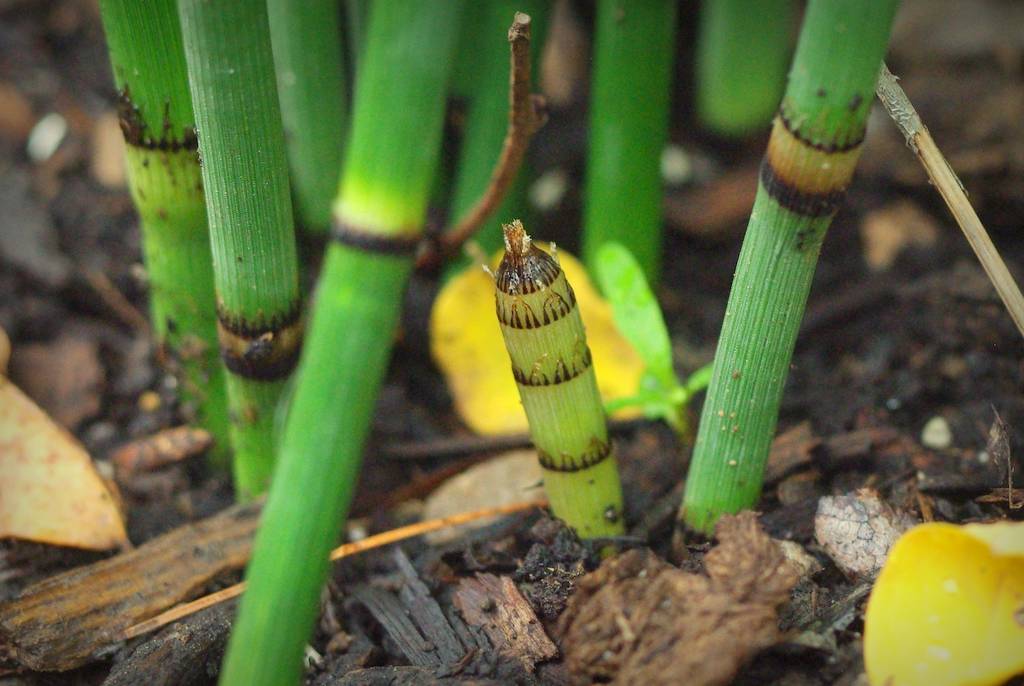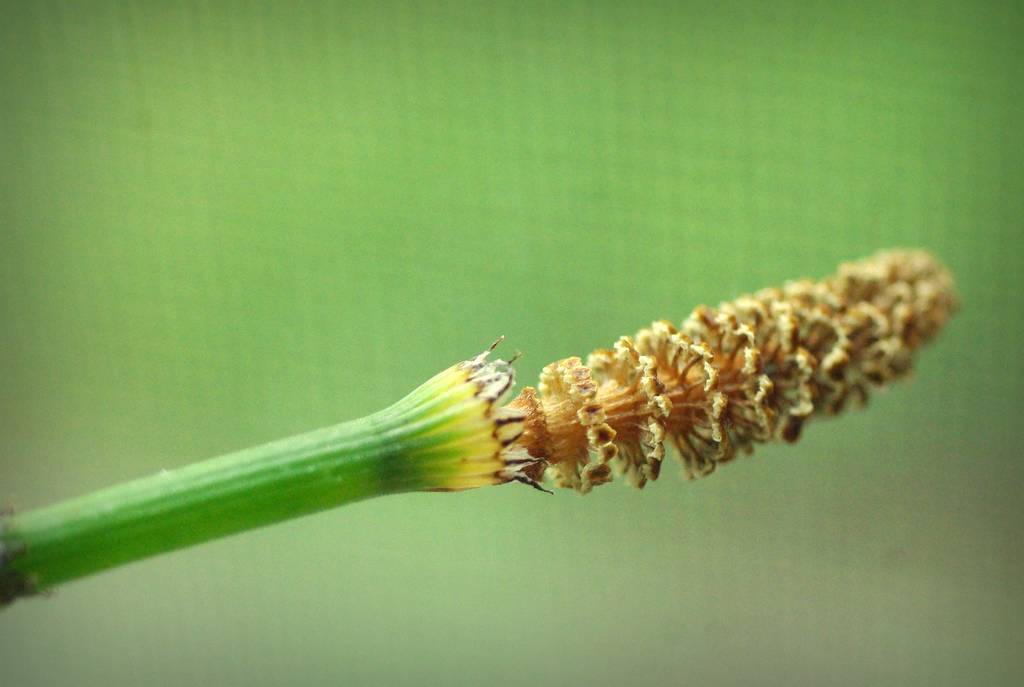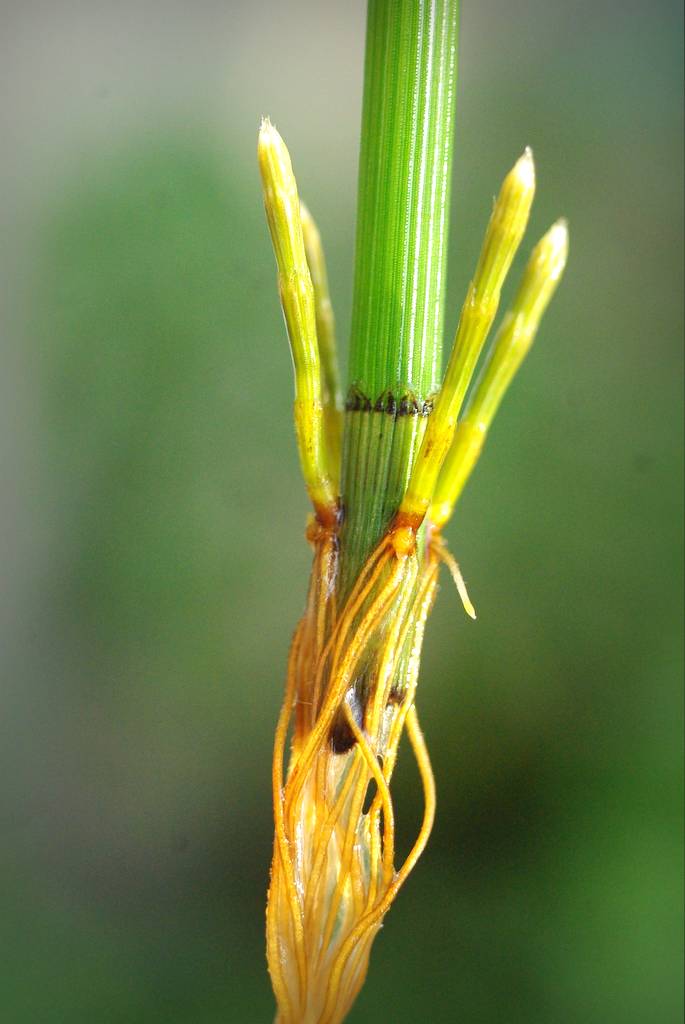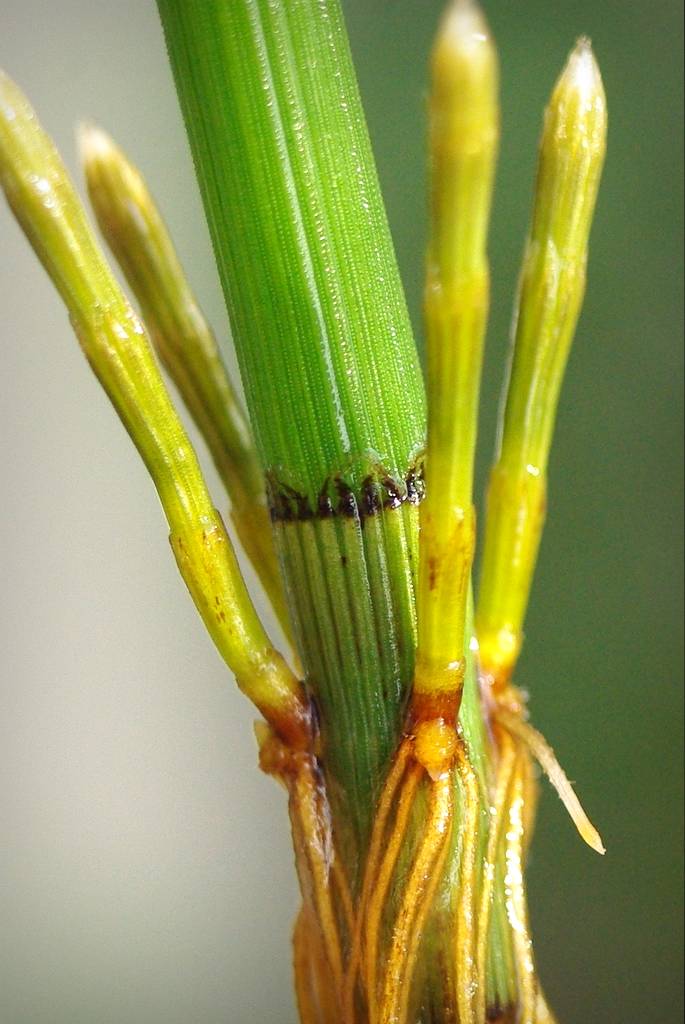Equisetum discovery
>> Friday, June 28, 2013 –
discovery,
foliage,
propagation
One of my favorite Missouri native plants is Equisetum hyemale, or "scouring rush". This seems-to-consist-only-of-stems plant adds a vertical element to the garden that I really love.
Although my plants are quite young and therefore not too impressive, I've seen thick plantings of this and can't wait until mine reach that density.
That's why I grow mine in a pot:
So I knew that to get new plants I could just take the smallest division, pot it up, and I'd have a new plant. Even taking just a little section of rhizome would result in a new plant.
It's constantly producing new growth too:
Oh, and this plant will produce spores in its cone-like flower structures:
So it has another way to reproduce too. (This "flower" is well past its prime.)
Besides the rampant spreading, there are two other things about this plant that annoy me somewhat: 1) rabbits love it, so a pot that's too low or in the wrong area will get sheared. 2) sometimes a stem will flop over, and once it loses its verticality it's gone forever -- you won't get that stem to stand upright again.
This happened a week or so after a heavy rain, so I cut the two floppy stems off.
Rather than throwing them onto the compost pile though, I thought I'd put them into a vase so I could enjoy them indoors -- I do really love these stems!
I expected them to act like cut flowers and eventually wither. Instead, they did this:
They rooted! Not only rooted, but appear to be producing a whole plant at the joint, complete with new stems!
They're doing this at every joint that was under water too!
So this plant not only spreads by rhizomes and spores, it can also produce a new plant from any stem that falls into water? Wow.
This is actually quite nice to know, as I have two different forms of this plant. One that I've had for several years but never seems to get very big -- its stems are pretty thin and never that impressive. The newer plant and the one that's shown in these photos came from Mike's garden. I saw that he had this growing, and that the stems on his plant were much thicker and taller than on mine. He had a division out of the ground almost before I finished asking if I could take a chunk home.
The point is, I can now easily multiply this better plant -- from scraps that I'd be throwing away no less -- and that's my insurance against rabbit attacks. (My favorite way to beat rabbits is with quantity.)
I suppose I shouldn't be surprised that this plant can do this, as I've seen other water plants sprout new plants from fallen stems before. It's just that this plant seems to be *all* stem -- just a thin, empty tube, not capable of this type of thing.
.













I love Equisetum hyemale too. I have a potted specimen hear a hose bib in the backyard so I can water it whenever I walk by. Without supplemental water it would die a quick death in our arid climate.
How cool is that! I've always loved this ancient plant too. Such an interesting form.
I think we call this horsetail rush. We have one really nice stand in our small stream and three more smaller ones in the pool below the stream. And we just learned that the reeds will grow new plants when they fall into the water - cool! I also noticed our "Baby Tut" is doing the same thing where the heads are touching down in the water. So fun to learn about new plants!
I also had to cut back some 4 foot [floppy after the wind] branches and I hope mine sprout too!
This plant isn't just an empty stem. The stem is solid at the nodes, where it has the leaves and produces new roots and branches. The rest of the hollow stem has in fact a lot of tube systems at the periphery, some for carrying water upwards and some for air downwards, if oxygen levels are low.
These are actually great ideas in about blogging. You have touched some good things here.
Any way keep up wrinting.